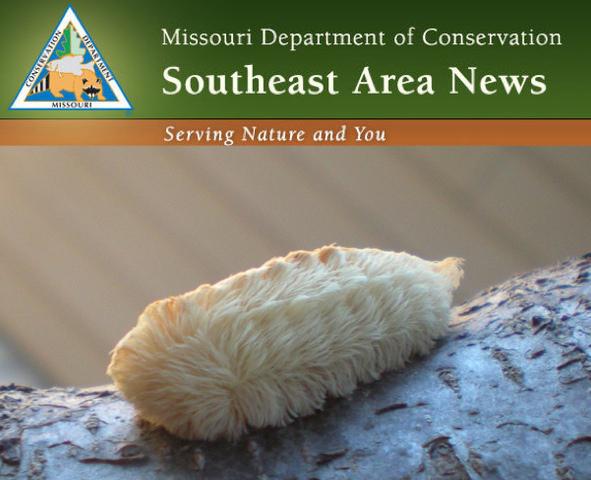
Law Enforcement Says, "Going Out Tonight? So Are We!"
Jefferson City, Missouri - As motorists plan their festive holiday gatherings between Thanksgiving and New Year, the Missouri Coalition for Roadway Safety wants to remind them that substance-impaired driving can be a lethal combination. The consequences are fines, jail time or even death.
There were 41 people killed and 242 seriously injured in Missouri traffic crashes between December 13, 2013 and January 1, 2014. Four of the fatalities and 32 of the serious injuries involved a substance-impaired driver.
To help make Missouri's roadways safer, statewide law enforcement is on the lookout for impaired drivers, with targeted enforcement efforts Dec. 12, 2014 to Jan. 1, 2015.
"Heavy traffic coupled with Missouri weather is enough to contend with, without adding alcohol or drugs to the mix," says Colonel Ron Replogle, superintendent of the Missouri State Highway Patrol. "Substance-impaired driving will not be tolerated."
Statewide all law enforcement agencies will be out in full force, and if you choose to drive impaired, you will be arrested.
There are no excuses to drive impaired. Please consider the following tips:
• Don't risk it - if you plan to drive, don't consume alcohol or drugs.
• Choose a designated driver before partying. A designated driver is someone who consumes NO alcohol or drugs at all.
• Take mass transit, a taxicab or ask a friend to drive you home.
• Report impaired drivers to law enforcement.
• Always wear your safety belt - it's your best defense against an impaired driver in a traffic crash.
To learn more, visit savemolives.com, or find us on Facebook and Twitter at Save MO Lives, #DriveSoberMO.

Age Spots by Ruth Dockins
ANNUAL ELECTION PERIOD FOR MEDICARE PART D ENDS DECEMBER 7:
We are nearing the end of the annual election period for Medicare Part D and it is really busy. There are 31 stand alone prescription drug plans from which to choose. It is my belief that everyone should check their present plan against what’s available for 2015 because there have definitely been some changes in coverage, deductibles and premium costs. Recently I checked on a plan for someone and found that the plan they had this year had really been a good one for them but by changing plans for next year they will save about $1000.00 over the year. Now, this doesn’t always happen but if they had not bothered to check, they would have been out a lot of money needlessly.
It’s not difficult to check your plan by going to www.medicare.gov on the computer. You just put your information in where indicated and the program will show you a list of plans from the cheapest to the most expensive. If you don’t have access to a computer you can call our office at 1-800-392-8771 and we can help. The open enrollment is from October 15 through December 7.
Some of you who have Medicare may be in a Prescription Drug Plan or a Medicare Advantage Plan that is marked by Center for Medicare/Medicaid Services (CMS) as a consistently low-performing plan (less than 3 stars.) If that is the case you should have received a notice from CMS urging you to review the plans and consider enrolling in a plan with a higher rating. This change should be made before December 7, however, if you miss that deadline and you are enrolled in a Medicare plan that has had a low rating for three years in a row you would be eligible for a Special Enrollment Period (SEP) to enroll in a plan that has a rating of three or more stars.
This is a one-time SEP and is offered only to people enrolled in a consistently low performing plan. It can only be done by CMS, If you fall into this group you should call 1-800-MEDICARE for further assistance. You cannot enroll directly through the plan or through our office if it is after December 7.
NOT ON MEDICARE YET? You may want to check out the insurance you can get through the Marketplace. We are going into the second year of the Affordable Care Act Insurance plan options. The open enrollment is from November 15 through February 15. New and more affordable plans may be available in your area this year. Look for a letter in the mail from your health plan describing any changes and contact your plan if you have questions.
Your local Community Action Agency will be happy to assist you in choosing a plan for next year. East Missouri Action Agency – 573-431-0103; DAEOC – 1-800-748-8320; South Central Community Action Agency – 573-785-4727.

“The numbers of stinging caterpillars encountered by Missourians each year is relatively low compared to other insects and compared to the numbers of stinging caterpillars in some other states,” Lawrence said.
“Their populations fluctuate from year to year, but occasionally one type will have an outbreak, such as the puss caterpillar’s fluctuation in Florida this year,” he said.
Of over 1,000 individual species of caterpillars in Missouri, Lawrence said there are about 15 species that are known to be present in Missouri with some sort of venomous capacity. The species that can deal the most painful sting or severe reaction in Missouri is the puss caterpillar (Megalopyge opercularis), also known as the flannel moth caterpillar. This is the same caterpillar featured in the news in southern states recently because of the surprising high populations occurring there this year.
“These puss caterpillars are present in Missouri, but they’re just not as common,” Lawrence said, adding that the puss caterpillar doesn’t look like a caterpillar at all, but looks more like a piece of fur.
“No head or legs are visible when it’s in its usual position and the stinging hairs are hidden within its mass of ‘fur,’” he said.
Lawrence said one of the most unusual looking of the stinging caterpillars in Missouri is the hag moth caterpillar (Phobetron pithecium), also called the monkey slug.
“It looks like some sort of brown, hairy, alien being with several pairs of hairy arms projecting out from its body,” Lawrence described.
Other stinging caterpillars in Missouri are the saddleback caterpillar (Acharia stimulea), stinging rose caterpillar (Parasa indetermina), buck moth caterpillar (Hemileuca maia), and the io moth caterpillar (Automeris io).
But these few venomous species of caterpillars are drastically outnumbered by their harmless relatives. Lawrence said it’s important to remember the value caterpillars hold in pollinating Missouri’s many plants, and as a food source for many birds, other insects and animals.
“We often have a love-hate relationship with caterpillars,” he said. “Butterflies are beautiful, and it’s fun to try to raise caterpillars until they turn into a butterfly or moth. Most caterpillars are harmless to humans and pets and can be safely handled, but some are not.”
Most of the stinging caterpillars have either hairs or spines, but not all hairy or spiny caterpillars are venomous. Lawrence said the best rule-of-thumb is not to touch hairy or spiny caterpillars if you’re not sure which species it belongs to. Some stinging caterpillars are brightly colored. He said it’s also a good practice to get to know some of the common species that reside in our area, by researching them online at sites like www.discoverlife.org, www.whatsthatbug.com, and http://bugguide.net.
Stings from some venomous caterpillars can be quite painful, but not deadly, according to Lawrence. Stings can be covered in scotch tape to remove any remaining spines, and then washed thoroughly with soap and water to clean the wound. Applying ice or baking soda may help reduce the pain. Lawrence said stings should be observed to ensure allergic reactions don’t occur, which could require medical attention.
Lawrence said there are some common caterpillars that look threatening but are harmless and interesting to hold. One example is the hickory horned devil (Citheronia regalis), which is a very large green caterpillar with bright orange horns that feeds on leaves of hickories and other hardwood trees.
“Overall, caterpillars are fun and interesting creatures we have the opportunity to witness in nature,” Lawrence said. “A person could spend time outdoors and go through their whole life without encountering one of these stinging caterpillars. They just aren’t too common in Missouri. It’d be a shame for someone to discount the whole lot of these fascinating little insects because of a few stingers.”

Jefferson City, Missouri - North American waterfowl continue to benefit from favorable nesting conditions in the north-central United States and Canada, according to surveys conducted during the summer. Meanwhile, habitat conditions in Missouri have set the stage for an excellent hunting season if weather continues to cooperate.
The U.S. Fish and Wildlife Service estimates this year’s total number of breeding ducks at 49.2 million. That is up 8 percent from last year, and 43 percent above the long-term average. Mallard numbers were estimated to be 10.9 million, similar to last year’s number and up 42 percent long-term. Long-term population trends for other popular duck species in this year’s survey include:
Northern shoveler up 114 percent
Gadwalls up 102 percent
Redheads up 85 percent
Blue-winged teal up 75 percent
Green-winged teal up 69 percent
Widgeon up 20 percent
Canvasback up 18 percent
Northern pintail down 20 percent
Scaup down 8 percent
Resource Scientist Andy Raedeke, with the Missouri Department of Conservation, says late-summer rains have been both a blessing and a curse, depending on location.
“On the bright side,” says Raedeke, “public and private wetlands that depend on water from high streams and rivers should be in good shape going into the fall. Similarly, pumping should not be an issue on most public and private wetlands. In some cases, the late summer rains provided an extra boost to moist soil plants and will contribute to excellent moist-soil seed production on many areas.”
However, he notes that in other locations the late summer rains caused flooding that reduced moist soil seed production and seed availability. He says the extent and duration of flooding at each wetland will determine if the flooding was beneficial or detrimental. The longer native plant seed remains underwater, the more it deteriorates.
Conservation Department wetlands in northwestern and southeastern Missouri are generally in good shape. North-central Missouri will have abundant water, but some wetlands likely were negatively affected by late summer floods. The same holds true for north-east Missouri and the area around the Missouri-Mississippi river confluence.
Raedeke says late-season rains helped western Missouri wetlands, which had been in drought. Timely rains and migration events could produce excellent hunting at Four Rivers and Schell Osage conservation areas (CAs).
“Hunters will want to pay attention to river and reservoir levels throughout the fall,” says Raedeke. “With the soil already saturated, it may not take much rain this fall to flood additional habitat and provide more hunting opportunities than we have in drier years.”
Managers of most public wetland areas around the state report conditions ranging from average to excellent. Most areas have at least good conditions. Here are rundowns on areas with the best prospects.
COLUMBIA BOTTOM CA sustained significant flood damage in 2013, but the area is back to normal this year. Both moist soil vegetation and row crops are in good shape, and the area’s pumps should be able to provide enough water to flood this food and provide good hunting opportunities. Hunters will find concealment cover sparse in some pools, however.
MARAIS TEMPS CLAIR CA has very good natural food. Crops in wetland pools are limited, but they look very good.
B.K. LEACH CA’s natural, moist-soil food is looking very good. Heavy rains flooded several food plots before they matured, and most of the pools have higher water levels than normal for this time of year.
DUCK CREEK CA is a special bright spot this year. Renovations there are complete, and hunters will find excellent moist-soil vegetation and good to very good corn in most of the hunting pools of Units A and B. All the wells are up and running, and all of the hunt units will be available this year. The recent red-oak survey indicates an above average production of acorns in the green-tree reservoirs, Pools 2 and 3. The wade-in Pools 7 and 8 also indicate a good a production of acorns as well. Pool 1 reservoir currently has an adequate water supply to flood the timber, however, there will be a couple of weeks delay flooding these pools until the trees begin to go dormant in mid to late November. There is no ADA blind available at Duck Creek.
TEN MILE POND CA has good to excellent moist-soil vegetation and food plots, and water conditions should be normal.
EAGLE BLUFFS CA has excellent moist soil production and bumper yields of grain crops. Pumps and other infrastructure are in good shape and water availability a month before the season was above normal, promising high-quality waterfowl habitat this fall.
BOB BROWN CA has had ample rain throughout the summer, and food-plot crops in the pools look good. The natural foods in the moist soil units look really good as well, thanks to the late-summer rains. High flows in the Missouri River are expected to permit pump operation all season to flood this food and set the table for ducks.
NODAWAY VALLEY CA has normal conditions, with row crops and natural foods both looking very good. Recent late summer rains ensure the area’s pumps will be able to provide ample water throughout the fall.
FOUR RIVERS CA is another area that had flooding problems last year. That has not been an issue this year. Instead, late-summer rains have contributed to good habitat conditions. Overall, the moist-soil units and food plot crops are good to excellent throughout Units 1 and 2, the “draw units.” Hunters can expect the number of available positions to be about normal. Natural food also is abundant in Units 3 and 4, the “open hunting units.” Unit 3 dried up during the hot, dry period in the summer, and rainfall has not been adequate to recharge much of this area. Currently there are 75-100 acres of water in the Ducks Unlimited Marsh in Unit 3. Most of Unit 4 was drained during the summer to facilitate construction of a new concrete floodway, which is now complete. Recent rains provided some recharge, but water is still very shallow and scattered throughout the unit, consisting of 300 to 400 acres of shallow water between the 6 pools. The amount of flooded acreage could increase if current, rainy conditions persist.
SETTLES FORD CA Settle’s Ford has good moist soil vegetation and crops. Water levels are normal, with some food being lost with recent flooding.
MONTROSE CA has fair moist soil vegetation, and water levels are normal.
SCHELL-OSAGE CA has received timely – but not excessive – rains this year, creating excellent waterfowl habitat. Moist-soil and food plot crops are excellent, and recent rains have helped recharge the lakes,which serve as a water supply to the wetlands. Hunters can expect the number of available positions to be about normal this year.
GRAND PASS CA reports very good conditions going into the hunting season. Moist-soil vegetation and crops look good. Hunters may encounter some areas of sparse vegetation in Pool 6, so cover in late season may be challenging in certain parts of the pool. Water supply should not be a problem this year, thanks to ample flows in the Missouri River.
FOUNTAIN GROVE CA has good habitat conditions in spite of a significant flood that put the entire west side of the area under water on Sept. 11. The flooding might affect food quality and quantity toward the middle and end of the hunting season, but at the moment the area has provided plenty of water in units that depend on rainfall or overbank flooding for hunting opportunity. Crops on east side walk-in units look good, so this area should offer good hunting this year. Flood waters allowed area staff to recharge Che-Ru Lake to full pool, which will provide ample water to flood the east-side units.
A handful of areas have less encouraging news.
TED SHANKS CA sustained damage from summer flooding again this year. As a result, food conditions on the area are poor. Smartweed and millet will provide some food in a few pools, but flooding took out all crops, leaving many pools with little or no food for ducks. Lack of cover will further hamper hunters. All flood-repair work has been completed, but ongoing construction work on the south end of the area will reduce the number of parties the area can accommodate this year. Hunting will only be in the upper wade and shoot pools and the ADA blind.
DARK CYPRESS CA has fair moist-soil vegetation this year, but extended wet period this summer prevented planting any food plots.
OTTER SLOUGH CA’s crops range from poor to good this year. Many were late getting in due to wet conditions and a prolonged dry period. Army worm damage after planting didn’t help. Flooding of Units 8, 9, and 10 could be delayed due to ongoing construction. The bright spot is good moist-soil vegetation on Otter Slough.
COON ISLAND CA has crops ranging from poor to fair for the same reasons as Otter Slough. Water management should be normal. Moist-soil vegetation is good at Coon Island.
Updated information about hunting conditions at the Conservation Department’s managed wetlands is available at mdc.mo.gov/node/9627.
Weather is the final factor – and always a wild card – in determining waterfowl hunting success. The best waterfowl seasons have a series of cold fronts that push waves of new ducks into Missouri from farther north throughout the hunting season. The worst-case scenario is a strong, early-season cold front that pushes the ducks into Arkansas before Missouri hunters have much chance at them. Another less-than-ideal possibility is a late fall, when ducks arrive late in one or more of Missouri’s three hunting zones and leave soon after.
Missouri’s waterfowl seasons are set to coincide with the average peak of migration in previous years. This year’s season dates are:
North Zone: Youth season - Oct. 18-19, Regular season - Oct. 25- Dec. 23
Middle Zone: Youth season – Oct. 25-26, Regular season - Nov. 1-Dec. 30
South Zone: Youth season – Nov. 22-23, Regular season - Nov. 27-Jan. 25
Whether these dates coincide with peak migrations and how long ducks and geese linger in the Show-Me State this year won’t be known until the season is history.
Details of duck and goose hunting regulations are available in the 2014-2015 Waterfowl Hunting Digest, which is available wherever hunting permits are sold, at Conservation Department offices and nature centers, or online at www.mdc.mo.gov/node/5646/.
More detailed information about hunting conditions at state-owned wetlands is available at mdc.mo.gov/node/9627. For information about this year’s duck and goose population surveys, see http://1.usa.gov/1ozPJVt.

Age Spots – by Ruth Dockins
Medicare Part D Open Enrollment has Started!
If you have a Medicare prescription drug plan, now is the time to take a close look at it and decide if you want to keep it or if you want to see if there might be a better one on the market. This year there are 31 stand alone prescription drug plans available and 58 Medicare Advantage plans available. Not all 58 Advantage plans are available in every area but each area will have several plans from which to choose.
Also if you have Medicare but never signed up for a prescription drug plan, now is the time when you can do so. You can choose the plan now and it will start Jan. 1, 2015. Keep in mind that if you did not enroll at your first opportunity you may have to pay a penalty for enrolling late. In some situations this penalty may be waived.
This year the least expensive plan premium is $15.70 per month and the highest deductible is $320.00. Not every plan has a deductible.
The cost of the premium for a plan should not be the deciding factor when choosing a plan, because if you get a plan that does not cover the drugs you take it won’t do you any good at all. Also most of the time the husband and wife do not have the same plan because they don’t take the same medicine.
We at Aging Matters will be happy to help you make your decision on your drug plan. All we need from you is a list of the drugs you take, the exact name, size and dosage and give us a call at 1-800-392-8771 or locally at 573-335-3331. You can ask for Jackie, Liz, Meagan or Ruth we’ll be happy to help.The Federal Government has a program, called Extra Help, to assist people with the cost of their drug premium, deductible and co-pay for their medicine. We can help you apply for that program. If you, as a single person, have income of $1459 per month or less and assets of $13,440, or less, (not counting your house and car) you would be eligible to get some assistance to pay for the cost of your drugs. For a married couple the income can be as high as $1966 per month and the asset level can be as high as $26,860. If you think you might fall into this category please contact us and let us help you apply for this program.
A few of you have received a letter from Social Security stating that you no longer qualify for the Extra Help program. This letter asks that you re-apply. Please contact us at the above listed phone number for assistance. The letter has come to you because of some sort of change in your financial situation; it may just mean that you will be eligible in some other way, that’s where we come in. We can look everything over and see if there is another way to make you eligible.
Remember you have from now until December 7 to change your drug plan if you want. Give us a call for assistance.

